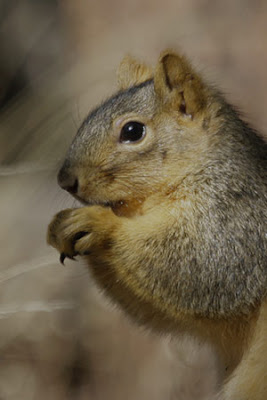 The 100-400mm and I are getting along fine, though I?ve not encountered the larger wildlife subjects I would prefer to photograph to test it. The stellers jays and squirrels are willing to pose briefly as they hurry to and fro picking up their payment of seeds and nuts.
The 100-400mm and I are getting along fine, though I?ve not encountered the larger wildlife subjects I would prefer to photograph to test it. The stellers jays and squirrels are willing to pose briefly as they hurry to and fro picking up their payment of seeds and nuts.
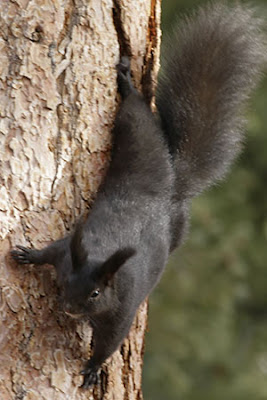
The squirrels spend so much time chasing each other away from the food, they eat very little. The jays seem to enjoy the contest of who-can-eat-the-most, so the first to arrive calls out to others. Let the eating begin!
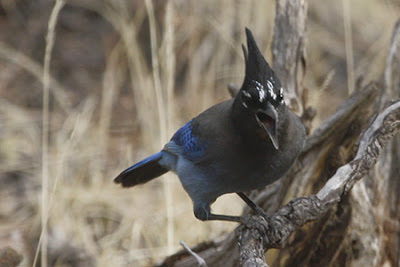
The lens is a bit heavy for me at 3 pounds, so hand held photography is alternated with tripod support. The manual says to switch off the IS (image stabilization) when using a tripod, but I sometimes forget. When I do remember, I then forget to switch it on again for hand held. Wish I could buy more memory for my wee brain.
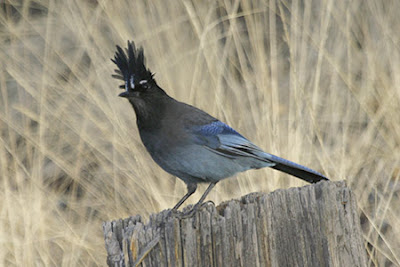
I like to shoot aperture priority when photographing birds as they move in and out of the shadows so quickly. All the images in this post were shot at f/5.6 with the ISO at 400 or higher. Shutter speeds vary with each image.
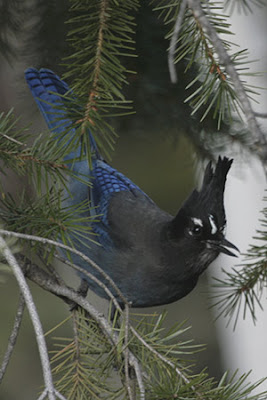
I?ve been working around the outside of my home, mostly shooting from the deck into the trees. Since the house is on a steep hillside, shooting from the deck often puts me at eye level with the birds in the trees.
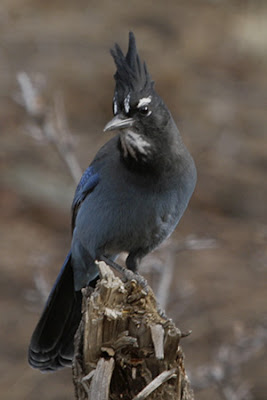
When I photograph birds, I begin to recognize individuals by the variations in their markings or injuries they have. I believe the birds are taking in the sight of me as well. I changed hats this morning as the temperature rose. When I put on the new hat, the birds flew up to higher branches and watched me for some minutes before coming back to feed. I suppose they?ve taken note of the new lens, too.
Love your Stellars Jay pictures.
Tres cute squirrels, con. I love the top picture because you can see the individual hairs in his fur. The second squirrel has interesting ears. I don’t know what species it is, but I’ve never lived around squirrels that look like that. And you know I love the jays!
The 100-400 is my favorite lens, but I can’t hand hold it any longer except in very bright light. That means traveling with a big lens, tripod, and lots of gear …. which I hate. And it’s next to impossible to manage when flying these days.
Thanks, Wren. When I travel, I use a photo backpack with adjustable compartments, so I’ll be taking this lens along, but may have to leave something else behind. Only wish it had wheels sometimes.
The squirrels with the tufted ears are abert’s squirrels, common to areas in the western U.S. We see many in our area that are dark like the one in this post, but they can also be a lovely grey with white as in my first post on this blog, Uncle Abert: http://condaily.blogspot.com/2007/03/uncle-albert-poses-for-my-camera-to.html
Aberts squirrels depend upon ponderosa pines for food and nesting sites, so their range is limited to areas with ponderosa pines.
I love those black (aka Aberts I lern) squirrels! Boy, this lens gets you right there to see every hair in every tuft! Cool pics! Interesting observation about the birds and your different hat. “getting to know you…..”